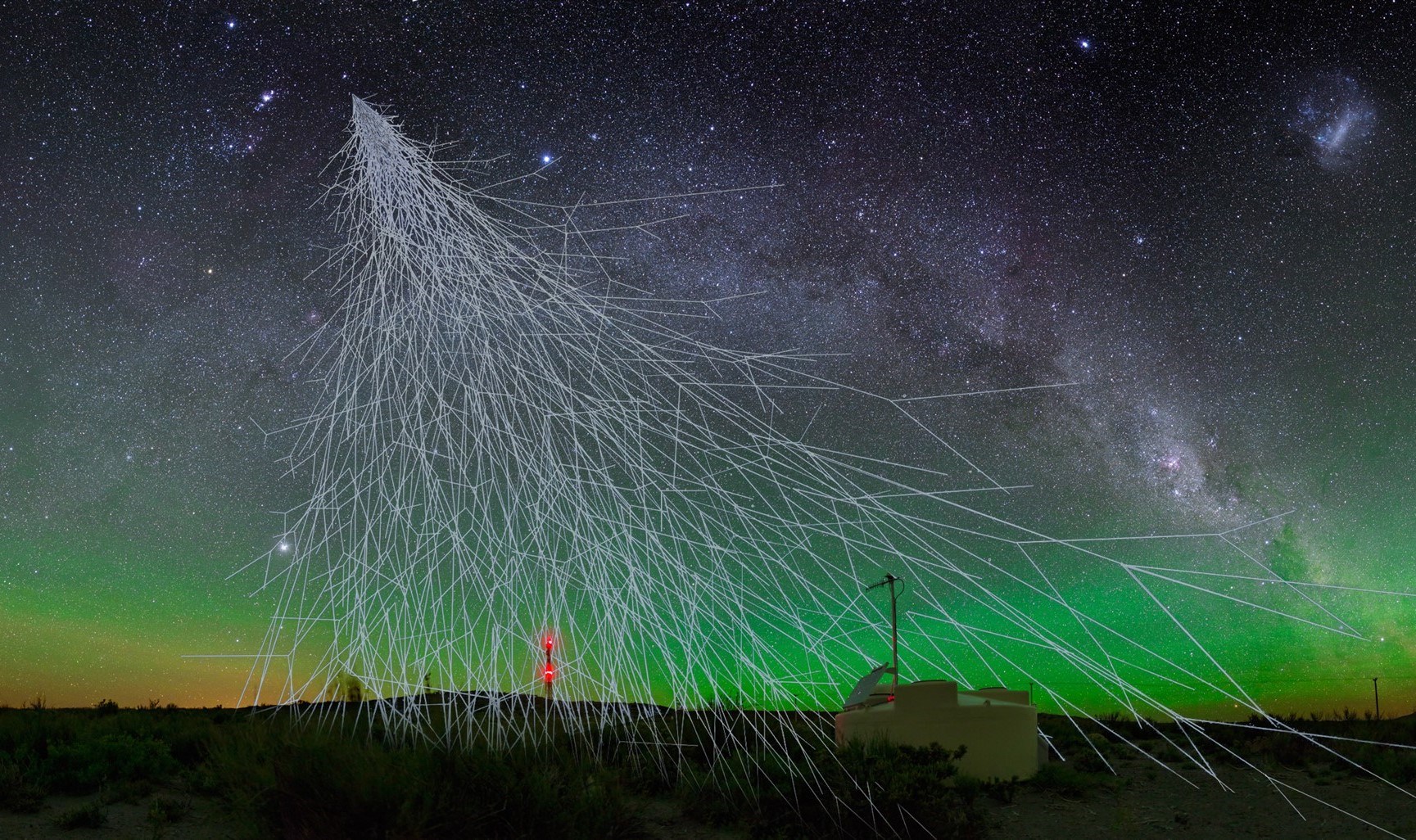 Astronomers have detected a rare and extremely high-energy particle falling to Earth that caused consternation because it came from a seemingly empty region of space. The particle, called Amaterasu after the Sun goddess in Japanese mythology, is one of the highest energy cosmic rays ever detected.
Astronomers have detected a rare and extremely high-energy particle falling to Earth that caused consternation because it came from a seemingly empty region of space. The particle, called Amaterasu after the Sun goddess in Japanese mythology, is one of the highest energy cosmic rays ever detected.It is thought that only very powerful cosmic events on a scale much larger than the explosion of a star can produce such energetic particles. However, Amaterasu appears to have emerged from the Local Void, an empty area of space surrounding the Milky Way galaxy. Prof John Matthews, from the University of Utah and a co-author of the paper announcing the discovery in the journal Science, said: “You trace its orbit back to its source and there is nothing high enough energy to produce it. “That’s the mystery of this, what’s going on?” He drew attention to the strangeness of the incident using his words.
It has an energy of 240 exa-electron volts
The Amaterasu particle has an energy exceeding 240 exa-electron volts (EeV), millions of times greater than particles produced at the Large Hadron Collider, the most powerful accelerator ever built, and equal to the energy of a golf ball traveling at 42 km/h. This value places it behind the Oh-My-God particle, another ultra-high-energy cosmic ray of 320 EeV detected in 1991.
These high-energy particles are expected to move through intergalactic space relatively untwisted. Therefore, it should be theoretically possible to follow their orbits backwards. However, neither Amaterasu nor the Oh-My-God particle had a discernible source. Scientists suggest this could indicate a much larger magnetic declination than expected, an unidentified source in the Local Void, or a lack of full understanding of high-energy particle physics.
It is hoped that we will learn more when astronomers finish expanding the Telescope Array and add 500 new scintillator detectors, increasing the detection area to 2,900 square kilometers. Once complete, the Telescope Array in Utah will expand to an area nearly the size of Rhode Island and will be able to capture particles from the sky with greater precision.